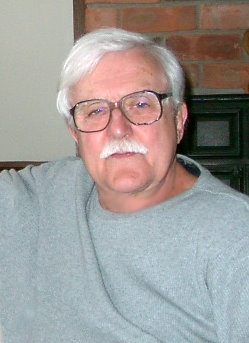Fear by Wild Bill
Hardly a day goes by without hearing about the exceptional bravery of someone who put their life on the line to help save a person who would have perished if they had not made a decision to risk all to rescue this victim in distress. Often the action is taken without considering the possibility of losing one's own life. Many times the fear of this ultimate sacrifice is realized long after the action has been taken. The fear may actually be altered as the memory factors in the dire consequences which could have happened if the rescuer had doubted for a moment instead of taking the saving action.
The most trying test for the brave person is to charge into flames to rescue someone trapped in a burning house or smashed vehicle which could blow up in any minute. It was this kind of experience which continues to bring back fantastic memories in my life which I would like to share with you.
Several years ago, when I was an aircrew electronics officer in the RCAF, I was stationed at the Maritime 407 Squadron at Comox, British Columbia. Nestled in a beautiful mountainous valley on the east coast of Vancouver Island, we were flying P2V Neptune aircraft for our submarine patrols. This was the aircraft of choice because it was fitted with two jetpods, and two propeller engines. We used to call our aircraft "two burning, and two turning". Because of the geographic location we needed to climb over the surrounding mountains which were 9000 feet high. We needed the power of our jets to get us above that altitude within the first few seconds of take off.
On this memorable flight we had completed all of our pre-flight preparations, settling in for our take off. The normal procedure was for the pilot to bring up the power settings on the two jet engines to 100% take off thrust, while keeping the brakes on the wheels. Once the power was reached, he would release the brakes and we would leave the runway like a rocket assisted take-off.
I was strapped in my seat at the rear rest position, beside a large observation window used on our search operations. We all listened to the co-pilot reading off the pressure settings on the jets in his monotonous tone. "Three zero. Thirty-five percent. Forty. Forty-five"
That was when the explosion startled everyone.
"What the hell was that?" asked the skipper.
"We are on fire skipper. I've got the rear hatch open. Everyone out. Hurry."
I got eight of the crew out before I jumped through the opening and struck the scorching runway.
A high wall of flame was within ten feet of where I landed. The pilot kept the aircraft going forward so that the wind would keep the flames away from the body of the plane. It was then I realized there were still two pilots and an engineer on board. I was certain they could not see from their position that their machine was still burning. I ran as fast as I could in my heavy flying boots so that I could indicate what was happening.
Suddenly I was soaked by a brown coloured liquid being shot at the fire by our base firemen from the massive foam truck which had raced across the tarmac to intercept our burning plane. In seconds the flames were snuffed out, and our plane stood dripping like a wet dog, as the last three crewmen came out of the desperate looking Neptune.
Investigators discovered the explosion was caused by a broken hydraulic line which spewed fluid over the hot engine until it combusted and blew large chunks of metal and flames all over the runway.
Remember I said memory plays a part in the fear generated after such a trauma. We had a full fuel load on for a ten hour mission. Can you imagine what a fireball would have lit up the sky if the explosion had happened only fifty seconds later, after we got airborne. I sure can't forget it. In fact, I'm lucky that I'm still here, and can share this memory with you.
Subscribe to:
Post Comments (Atom)

No comments:
Post a Comment